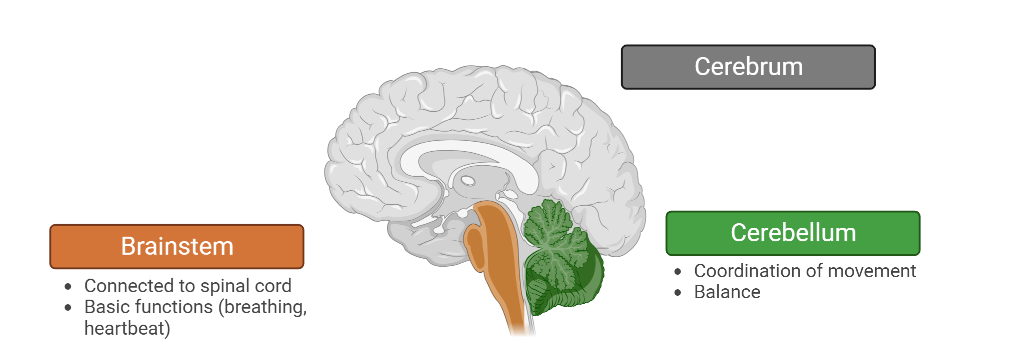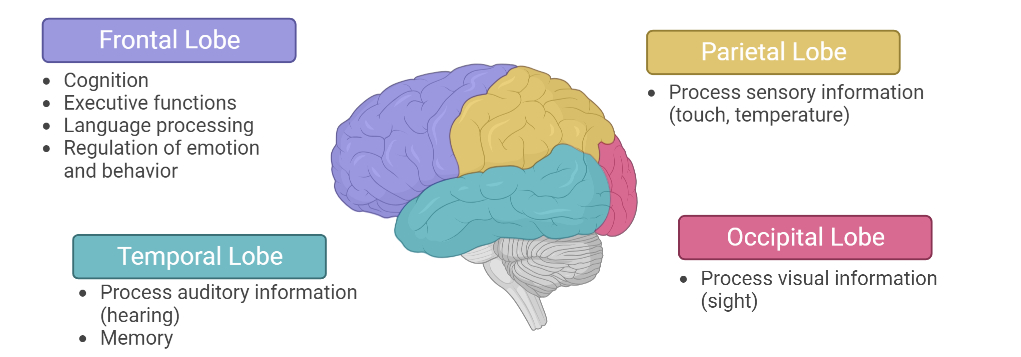This post is also available in Dutch.
This blog is part of this year’s summer series called Brain Basics, in which we dive into the general functions and development of our brains.
We were largely oblivious to the brain’s organization for a long time. One of the first major clues for the brain’s layout came from construction foreman Phineas Gage in 1859. During a work accident, a rod pierced the front of his brain. Miraculously, he could still do everything: walk, eat, talk, see. The only thing that noticeably changed was his personality, the formerly nice man had suddenly become antisocial. This led researchers to the idea that the brain has a specific layout, with certain functions associated with certain areas.
The brainstem: The control center of the brain
We start our journey at the spinal cord. This nerve highway sends all kinds of bodily sensations such as touch or signals from our organs to the brain. The spinal cord is connected to the rest of the brain via the brainstem which regulates basic functions like breathing, heartbeat, and body temperature. Attached to the back of the brainstem is the cerebellum which governs the coordination of movement and your sense of balance. The topmost part of the brainstem, the thalamus, is a kind of control center. Here, information is passed to the rest of the brain and the cerebrum.

The cerebrum: The work of complexity
The thalamus distributes information throughout the cerebrum, allowing us to perceive the world. This distribution is done in a structured manner: Sensory information (like touch) goes to a part of the brain called the parietal lobe. Information from the eyes goes directly to the back of the brain, the occipital lobe. This area is almost entirely used for vision. Your hearing is processed in the temporal lobe. In this way, each type of information continues its own way through the brain.

Teamwork
Information processing takes place in the gray matter, which consists of cell nuclei that are mainly located on the outside of the brain. Brain cells work together to perform complex tasks, such as making decisions or understanding a text. For this collaboration, they communicate through the white matter. Which is mainly located on the inside of the brain. It is made up of something analogical to a telephone wire that connects the cell nuclei. These connections are covered with an insulating layer, allowing the cells to communicate with each other quickly. White matter gets its name from the white protein (myelin) in this layer.

The frontmost part of the brain, the frontal lobe, plays a major role in controlling complex tasks. The frontal lobe is the largest and the “smart” part of the brain. It is responsible for our awareness, control over behavior and emotions, and executive function. It is therefore an important area of our personality. Now you know why Phineas Gage’s personality had altered after he survived the accident.
In the upcoming blogs of this series, we’ll dive further into the anatomy, the development, and the different functions of our brains.
Credits
Author: Judith Scholing
Buddy: Maartje Koot
Editor: Marlijn ter Bekke
Translation: Helena Olraun
Editor translation: Siddarth Chaturvedi
Featured image by David Rodrigo via Unsplash
